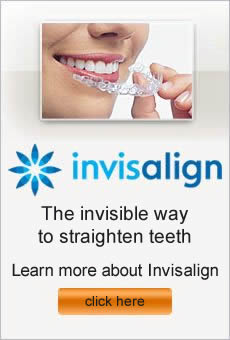In most cases, you have probably either had braces, need braces, or know someone with braces. When you need orthodontic treatment, you often receive a great deal of information. Having a basic knowledge about the world of orthodontics will help you make educated decisions for yourself or a loved one.
What is orthodontics?
Simply put, orthodontics is the dental specialty focused on the diagnosis, prevention, and treatment of dental or facial irregularities.
How is an orthodontist different from a dentist?
While all orthodontists are dentists, not all dentists are orthodontists. In addition to successfully completing dental school, orthodontists must also take another two to three years of advanced training.
Can I tell if braces are needed?
The best way to determine if you or a family member should seek orthodontic treatment is through an evaluation with an orthodontist. If you notice buck teeth, an overbite, under bite, or open bite, orthodontic treatment is a likely course of action.
What’s the difference between Phase I and Phase II?
With Phase I, or early interceptive treatment, patients are between 6 and 10 years old, and all their permanent teeth have not yet erupted. Certain problems are easier to treat when children are younger and they are still growing. Also called comprehensive treatment, Phase II happens once all permanent teeth come in and usually involves a full set of braces.
What are my treatment options?
That answer depends on your age and your specific case. Typically, younger children respond well to traditional metal braces. Older teens and adult patients often like less conspicuous choices. Braces with clear brackets and clear aligners like Invisalign can straighten your smile and allow you to maintain a professional image.
Healthy straight teeth at Dr. Fotovat – Burbank Orthodontist – WebBraces.com
During orthodontic treatment, you need to take special care of teeth and gums. Extra brushing and additional flossing tools may become part of your routine. At the same time, you need to ensure that nothing happens to your braces. The following tips will help you protect your investment:
Eat right
While you have braces, you should avoid certain foods. Hard candy and sticky substances can crack brackets or break off wires. When you have apples or carrots, cut them in bite size pieces just to be safe.
Wear a mouth guard
For sports activities, you need to protect your face and mouth by having a mouth guard. Normally, dentists and orthodontists recommend custom mouth guards, but during orthodontic treatment you need the store-bought appliances so that your mouth guard won’t damage your braces.
Report problems immediately
Even when you do everything right, you may still have a broken bracket or loose wire. Apply dental wax if you experience discomfort and contact your orthodontist for the next step.
Curtail bad habits
Chewing on ice or biting your nails can harm your teeth and cause problems with your orthodontia.
Don’t make adjustments yourself
If your wires or brackets don’t seem right to you, call the orthodontist. Attempting to correct the issue can create bigger problems.
Visit the dentist for checkups
At these appointments, your dentist can make sure teeth and gums are holding up well during your time in braces. If enamel weakens or you develop gum disease, you could have trouble with your brackets and wires.
Protect your braces – Dr. Fotovat – Burbank Orthodontist – WebBraces.com
When most people think of October, they envision cooler weather, changing leaves, and Halloween. The American Association of Orthodontists (AAO) celebrates October as National Orthodontic Health Awareness. During this month, many orthodontists will help educate the public about the types of braces, adult orthodontic treatment, and other important orthodontic issues.
Having a straight smile can boost confidence and improve oral health. Crooked and crowded teeth are harder to clean, which makes you more susceptible to issues like gum disease and tooth decay. If you have concerns about the alignment of your teeth, contact your orthodontist.
Another big event during October called Halloween, can present challenges for those with braces. To enjoy the holiday and protect your orthodontia, consider these helpful hints:
• Choose wisely. Avoid sticky candies like gummy bears, taffy, or caramel because these treats can pull off brackets and damage wires. Stick with milk chocolate, sucking candies or sugarless gum instead.
• Don’t overdo. Too much candy will not only give you a stomachache, but it can also create problems for your teeth. The sugar in the candy feeds the bacteria in your mouth and increases the chances of developing decay.
• Remember to brush. As soon as you finish your treats, brush and floss your teeth to remove food particles from your teeth and in between brackets.
• Try healthy alternatives. Have a piece or two of candy but consider celebrating the holiday with apple slices, grapes, or other nutritionally sound options.
orthodontic dental practice in Sherman Oaks
Many people think that braces are just for children and teenagers. Approximately one in five orthodontic patients, however, is over 18 years of age. Having a healthy, straight smile is a feature you never outgrow. Understanding your options can help you decide if adult treatment might be right for you.
How do I know if I need treatment?
Crooked teeth or a bad bite may indicate that you should think about orthodontic treatment, but the best way to know for sure is to make a consultation appointment. At this visit, your orthodontist can perform a complete evaluation and determine if you need orthodontia.
Is there an age limit for orthodontic treatment?
As long as the tissue around teeth is healthy, you can undergo orthodontic therapy at any age. Straightening your smile can contribute to overall health and wellbeing, so schedule a screening appointment to find out if you could benefit from treatment.
What are my options?
While metal braces are still available, most adults would like a less conspicuous form of treatment. Clear aligners such as Invisalign, as well as In-Ovation C braces, allow you to improve your smile without the look of metal appliances.
Will orthodontic treatment impact my routine?
In general, you can still lead a busy, active life. During traditional treatment, you need to stay away from sticky foods, visit the orthodontist regularly, and take extra time for cleanings. If you have clear aligners, you need to wear the appliances consistently, but take them out for brushing, flossing, and meals.
How long will treatment last?
Every case is unique, so there isn’t a set answer. Traditional braces usually stay on for 18 to 24 months. Therapy with clear aligners typically lasts 12 to 18 months.
Adult Orthodontics at our orthodontic dental practice in Sherman Oaks, CA – Mehdi Fotovat, DDS
A popular option for older teens and adults, Invisalign clear braces are an alternative to traditional metal orthodontia. The custom, clear aligners exert gentle pressure on teeth, moving them into the right position. With Invisalign, patients can achieve a perfect smile without the hassle and embarrassment of metal brackets.
In just 12 to 18 months, the Invisalign trays will give you a straighter smile. Before beginning treatment, your orthodontist will take pictures, X-rays, and molds of your teeth. Using this information, the doctor will design a detailed course of action for correcting your smile. Based on this individualized plan, an Invisalign lab will generate your complete set of aligners.
Patients wear each aligner for about two weeks and then move on to the next one in the series. Your orthodontist will monitor progress at appointments every four to six weeks. Remove your aligners to brush, floss, eat, and for special occasions.
To decide if Invisalign is right for you, think about these points:
Cost
Compared to other orthodontic choices, Invisalign can be more expensive. Because treatment is imperceptible to most people, many individuals feel the additional money is a worthwhile investment.
Adjustment Time
Some patients develop speech difficulties until they become accustom to the aligners. As well, you may notice excessive saliva with the initial use of the trays. Typically, these symptoms pass after a couple of weeks.
Diligence
For effective treatment, you need to wear the aligners about 22 hours a day. If you feel like remembering to keep the trays in place will be difficult, you might want to choose more traditional treatment options.
Invisalign at Dr. Fotovat – Burbank Orthodontist – WebBraces.com



